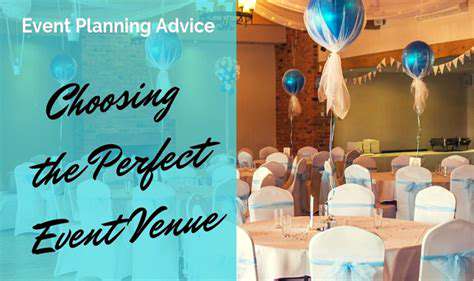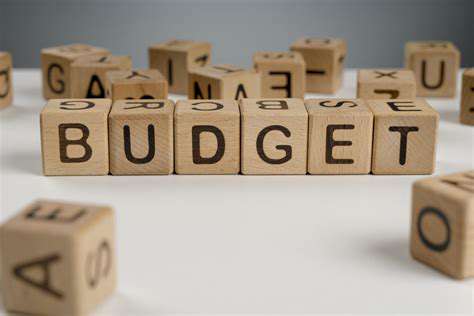Affordable Wedding Budget Planning for Your Special Day
Table of contents
Assess your finances before setting a wedding budget.
Identify non-negotiables to prioritize your budget effectively.
Research local vendors for informed cost analysis.
Establish a flexible budget with a contingency fund.
Choose a venue considering accessibility and guest needs.
Evaluate venue costs, including hidden fees.
Select an appropriate catering style for your wedding.
Budget for catering, including food and service fees.
Communicate openly with your caterer for tailored service.
Incorporate creative menu options to stay within budget.
Plan wedding attire budget considering accessories and alterations.
Explore affordable options for wedding attire and accessories.
Shop strategically during off-peak seasons for savings.
DIY decorations can create impactful yet budget-friendly atmospheres.
Personalized signage adds unique touches to your décor.
Setting Your Wedding Budget: The First Step
Understanding Your Financial Landscape
The first step in planning your wedding budget is to thoroughly assess your personal financial situation. It is advised that couples organize their current savings, sources of income, and possible financial support from family and friends. According to data from wedding planning platform The Knot in 2022, American couples spend an average of about $28,000 on weddings, but this figure is just for reference; the actual budget must align with your financial capabilities.
Creating a detailed spreadsheet to record daily income and expenses can clearly show your disposable income. Special attention should be paid to setting aside amounts for daily expenses (such as loans, bills, etc.) to ensure that the wedding budget plan is practical. Recently, some couples reported that separating emergency funds into its own line item helped them successfully avoid financial pressure from unexpected expenses.
Setting Priorities for Your Wedding
It is crucial to confirm with your partner the essential elements of the wedding. Is it the dream venue, signature catering, or a top-tier photography team? By prioritizing, you can allocate 80% of the budget towards core items. It is suggested to use a wish list grading method: A (must haves), B (try to fulfill), C (consider eliminating).
Special attention should be paid to hidden costs: overtime service charges, staff meal reimbursements, tips, etc., are often overlooked expenses; it is advised to set aside a 10% floating space in the budget table. Last year, a bride shared that a 20% service fee that was not accounted for caused overall overspending, a lesson worth noting.
Researching Costs and Vendor Options
Once the budget range is determined, comparing costs is key to controlling expenses. When obtaining quotes from local vendors through platforms like WeddingWire, it is advised to create a comparison chart to record service details, user reviews, and price differences. Recent recommendations from friends about weddings often uncover high value choices; one couple saved 30% on floral arrangements through a recommendation from a friend.
Seasonal discounts should not be missed: booking venues between January and March usually offers a 20% discount, and catering quotes for midweek weddings are typically lower than weekends. Flexibly adjusting dates can create more negotiation space for couples.
Building a Flexible Budget

It is recommended to set up a dynamic adjustment mechanism: each time a vendor is confirmed, update the budget table and reallocate any remaining funds to other projects. For instance, if savings are made on venue costs, the surplus can be used to enhance guest favors. Financial experts recommend keeping a 15% contingency fund to deal with sudden changes such as an increase in guests or weather fluctuations.
Using financial management apps like Mint can track spending in real-time; some couples successfully kept their total expenses within 97% of the budget by setting category alert functions. Regular financial reviews with your partner can ensure both parties reach a consensus on the flow of funds.
Choosing the Right Venue
Location Considerations
Choosing a venue location should balance aesthetics and practicality: a remote venue with pastoral scenery may increase transportation costs for guests, while a central location, although convenient, may lack character. It is advised to create a guest distribution map; if over 70% of guests are from out of town, prioritize venues near transportation hubs. One couple chose an industrial-style warehouse next to a high-speed train station, which not only facilitated travel but also created a unique wedding memory.
Capacity and Layout
The venue capacity should exceed the total number of guests by 15%-20% to avoid crowding and ensure activity space. Special attention should be paid to the flow design: the registration area, ceremony area, and dining area should all naturally connect. One wedding suffered a 30% guest turnover at an important segment due to a dessert table blocking the passage, highlighting the importance of layout planning.
Cost and Packages
Carefully scrutinize package contents: an all-inclusive plan that includes table and chair arrangements and basic lighting equipment may be more cost-effective than itemized rentals. One couple saved 15% on out-of-town service fees by choosing a vendor who was part of the venue's partnered photography team. Regarding off-peak discounts, booking outdoor venues from November to February typically offers a 30% discount.
Accessibility for Guests
Accessible facilities are often overlooked: check ramps, accessible restrooms, and other details to ensure all guests can comfortably participate. Creating an electronic guide that includes parking location and shuttle bus schedules can greatly reduce inquiry pressure on the day. One wedding received high praise from international guests for providing bilingual navigation information.
Creative Catering Solutions

Choosing the Right Catering Style
The catering style sets the tone of the wedding: a buffet is suitable for a casual party, while plated service feels more elegant and formal. It is advised to set up 3-5 signature dishes, such as story-based dishes that reflect the couple's hometown flavors. One coastal wedding's custom seafood tower became a memorable point that guests talked about for years to come.
Budgeting for Catering Costs
- Set a per capita catering budget in advance
- Include a 15% service fee and an 8% contingency for unexpected losses
- Seasonal ingredients can reduce costs by up to 40%
Working with a Caterer
Focus on food temperature control during tastings: warm dishes need to stay hot, and cold dishes need to remain fresh as they directly impact guest experience. One couple ensured the best taste by requiring the vendor to arrive 2 hours in advance to set up the equipment. Establishing a communication group with vendors can help synchronize process changes in real time.
Wedding Attire on a Budget
Understanding Your Wedding Attire Budget
The budget for wedding dresses should account for 15%-20% of the total costs, including alterations and accessories. One bride saved on the second dress expenses by choosing a design with a detachable train that allowed for a transition from ceremony to reception. It is recommended to begin dress fittings at least 3 months in advance to allow enough time for alterations.
Choosing Affordable Options
Second-hand platforms can hide surprises: one groom purchased a limited-edition suit on Vestiaire Collective at one-third of the price. Rental websites have recently launched at-home try-on services that allow couples to apply for up to 5 dresses for comparison at home, making it much more convenient for those on a budget.
Smart DIY Decorations
Creative Centerpieces
Repurposing old items showcases personality: one couple used a vintage gramophone converted into a flower vase, becoming the most touching decoration at the event. Bulk purchasing seasonal greenery can reduce costs, while LED string lights can effortlessly create a romantic atmosphere.
Personalized Signage
A hand-written calligraphy sign-in wall is both environmentally friendly and holds commemorative value. A wedding's directional sign used a collage of the couple's travel photos to cleverly blend love story elements with practical function.
Read more about Affordable Wedding Budget Planning for Your Special Day
Hot Recommendations
- How to Choose the Right Wedding Photographer for Your Big Day
- Step by Step Guide to Wedding Venue Decoration
- Expert Advice on Choosing the Right Wedding Venue
- Creative Vintage Wedding Themes for a Retro Celebration
- Inspiring Beach Wedding Ideas for a Unique Celebration
- Affordable Wedding Venue Ideas for Every Style and Budget
- Step by Step Wedding Planner Checklist for Every Bride and Groom
- How to Plan a Timeless Wedding with Detailed Budgeting Strategies
- Ultimate Wedding Venue Selection Guide for Couples
- Essential Wedding Planning Tips for First Time Brides


